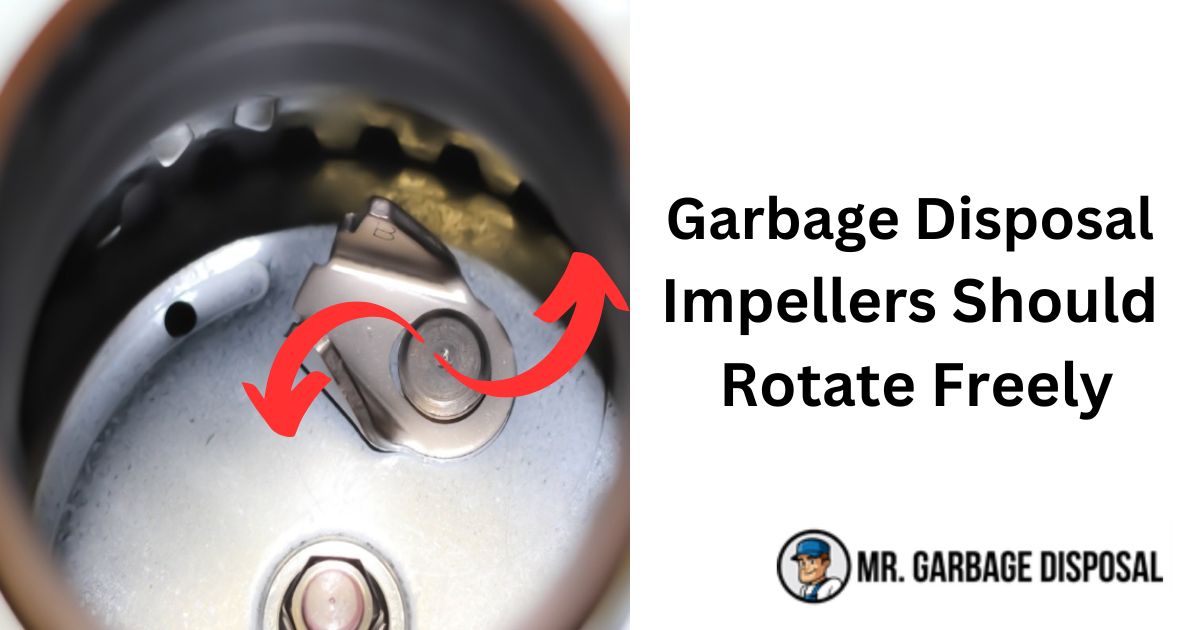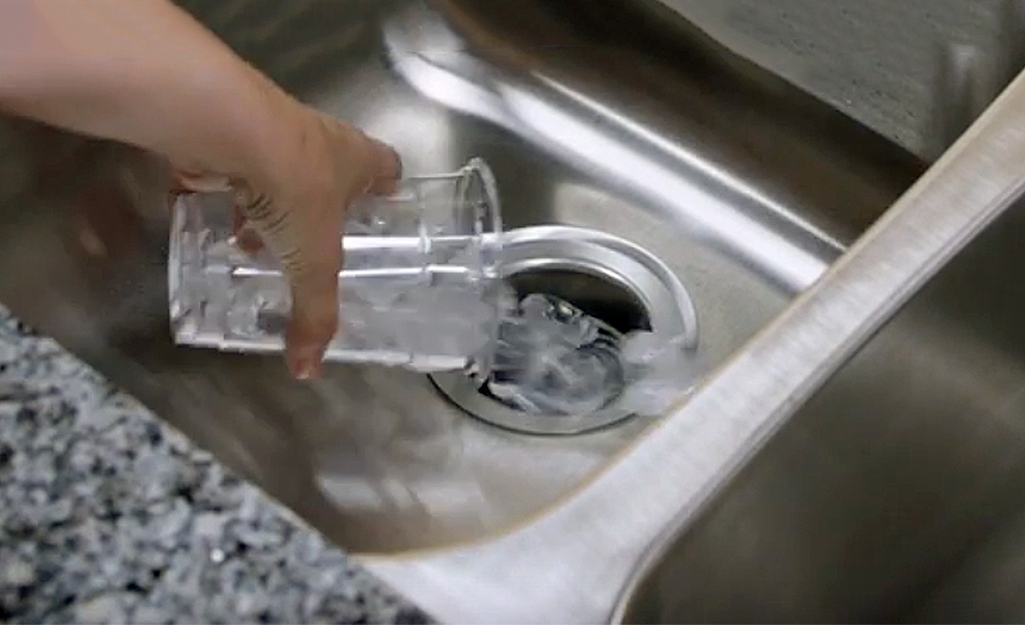What Are Garbage Disposal Blades?
Garbage disposal blades are the sharp, spinning components located inside the disposal unit that are responsible for chopping and grinding food waste into small particles. These blades are typically made of durable materials such as stainless steel and are designed to withstand the rigors of heavy use. Garbage disposal blades come in various shapes and sizes, depending on the model of the disposal unit. Some models have a single blade, while others have multiple blades or impellers that work together to efficiently break down the food waste. Proper maintenance and care of the blades is important to ensure optimal performance and prevent damage or wear over time.
Are Garbage Disposal Blades The Same As Impellers?
Garbage disposal impellers are rotating blades or discs located inside the disposal unit that are responsible for grinding and breaking down food waste into smaller particles. The impellers themselves are attached to a flywheel which is then spun by a motor at a high speed, creating centrifugal force that forces the waste against the walls of the disposal unit. Any food scraps in the disposal are spun up along with the flywheel and they impact the impellers and the sides of the disposal – this grounds any waste into tiny pieces that can easily flow through the drain pipes. The impellers are made of durable materials such as stainless steel, and they come in various shapes and designs to optimize the grinding efficiency of the garbage disposal.
So Is It Normal For Garbage Disposal Blades To Move Freely?
Yes, 99% of the time, garbage disposal blades should move freely – when the unit is off (and unplugged) you may observe that the blades inside your garbage disposal can move if you poke at them with pliers or a fork. This is normal, as when the garbage disposal powers on, the rotational force will “swing” the impellers / blades into a different position to essentially smash into your food waste, causing the food scraps to be shredded up into tiny pieces. These fine pieces are then sent down the drain. Without properly moving impellers or blades, food waste cannot be pulverized and can lead to large food chunks – which can cause clogs in your kitchen drain and back up the sink.

Can Garbage Disposal Blades Ever Become Too Loose?
It doesn’t happen often, but yes, since it is a moving part, garbage disposal blades can become looser then they were at manufacture, but it usually does not cause any problems. However, if you observe the following issues, these might indicate that your garbage disposal blades are loose and need repair or replacement:
- Loud or unusual noises: If your disposal unit is making louder than usual or unusual grinding noises, it could be a sign that the blades are loose and hitting against the inside of the unit.
- Reduced grinding power: If the disposal is struggling to grind food waste or taking longer than usual, it could be because the blades are not spinning properly due to being loose.
- Vibration or shaking: If the disposal unit vibrates or shakes when in use, it could be a sign that the blades are not properly aligned or are loose.
- Leaking: If you notice water leaking from the disposal unit, it could be because the blades are loose and causing damage to the unit’s internal components.
If you are experiencing any of the above problems and cannot be sure if it is the garbage disposal blades that are causing the issue, it is best to contact a professional plumber or technician to inspect and repair the unit.
What To Do If Your Garbage Disposal Is Not Spinning Properly

Sometimes, food waste such as fruit pits or bones may catch the blade of the garbage disposal and jam it in an abnormal position, and this may reduce the grinding power of your disposal. Luckily this problem is easy to solve with a couple cups of ice. Using ice to dislodge a stuck garbage disposal can be an effective and easy method to help remove any built-up food waste or debris that may be causing the unit to jam. Here are the steps to follow:
- Fill a plastic bag with ice cubes. You can also add a small amount of rock salt to help loosen any debris.
- Turn off the power supply to the garbage disposal unit by unplugging it or turning off the circuit breaker.
- Pour the ice cubes into the disposal unit and turn the power supply back on.
- Turn on the water faucet and run cold water into the disposal unit for approximately 10-15 seconds.
- Turn on the disposal switch and allow it to run until the ice has completely melted.
- Once the ice has melted, turn off the disposal and run cold water for a few more seconds to help flush out any remaining debris.
- Repeat the process as needed until the disposal unit is running smoothly again.
RELATED: The Garbage Disposal Ice Trick: How Does It Work, And Should You Do It?
Using ice to dislodge a stuck garbage disposal can help break up any built-up debris and help keep the blades and impellers working effectively. However, if the issue persists or the disposal unit is still not working properly, it is best to contact a professional plumber or technician for further assistance.
What To Do If I Hear A Clinking Sound Coming From My Garbage Disposal?
How to Fix a Clinking Sound in Your Garbage Disposal
If you have a garbage disposal in your kitchen, you know how convenient it can be. But what happens when you hear a clinking sound coming out of it? Before you start worrying about loose blades and costly repairs, follow these simple steps to fix the problem.
Step 1: Turn off the Garbage Disposal
The first thing you should do when you hear a clinking sound coming out of your garbage disposal is to turn it off. This will prevent any accidents from happening while you are trying to fix it.
Step 2: Look for Foreign Objects
The most common reason for a clinking sound in a garbage disposal is a foreign object inside. Use a flashlight to look into the garbage disposal and locate any foreign objects inside, such bones or fruit pits. Be careful not to stick your hand inside the disposal.
Step 3: Remove the Foreign Objects
Once you have located the foreign object, use a pair of tongs or tweezers to remove it. Be gentle and careful not to damage the blades or other parts of the disposal.
Step 4: Turn on the Garbage Disposal
After you have removed the foreign object, reconnect the garbage disposal and turn it on to see if the noise has stopped. If the noise persists, it may be due to a bent impeller or lugs.
Step 5: Call a Professional Plumber
If the clinking noise continues after you have removed any foreign objects and turned the disposal back on, it may be time to call a professional plumber. They can diagnose and fix any problems with your garbage disposal.
In conclusion, a clinking sound in your garbage disposal is a common problem that can be fixed by running ice down your disposal or removing the foreign object that is causing the sound. If the sound persists, always remember to always turn off the disposal before attempting any repairs, and if you’re unsure or uncomfortable with the process, call a professional for help.
Leave a Reply